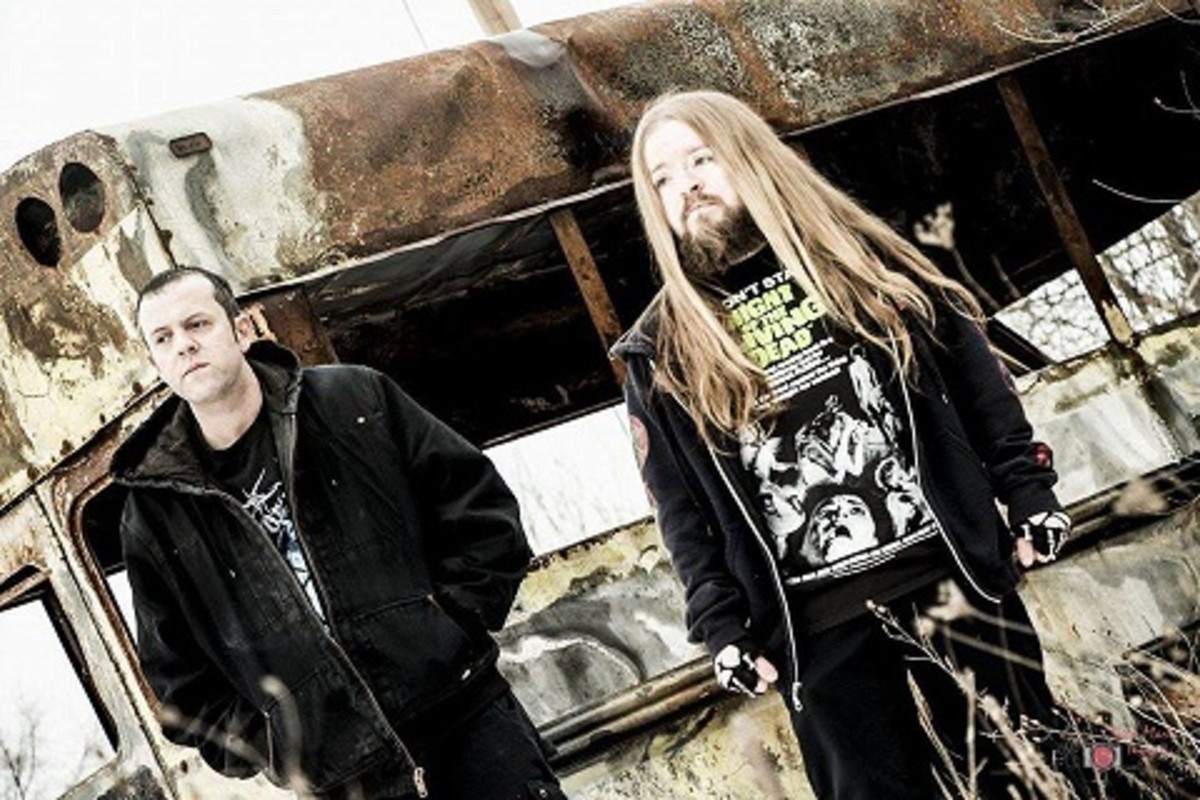Cacotopia — Cacotopia Review
Cacptopia, a two-piece Progressive Black Metal entity from America, founded in 2002, unleashed their third independent full-length, the self-titled Cacptopia on May 2nd, 2025—raw, technical, and ceremonially unrelenting.
Cacptopia Review: This review will evaluate every aspect of the album, from its intricate musical composition to its production. Our analysis will provide valuable insights to help you determine if this album is worth adding to your collection.

The First Three Sins, The Summary
The Fourth Sin, Overall Discussion
Invocation of Collapse: The Hymnal Threshold
The moment the play button is engaged, the auditory rite begins with the opening hymn, The Beginning of the End. This hymn does not merely suggest an introduction—it embodies it. Vocals shift fluidly, oscillating between invocation and lament. This duality is mirrored in the instrumentation, which navigates a compelling tension between structured, ritualistic arrangements and stark, chaotic collapse.
Architects of Precision: Black Metal Reforged
As the ten subsequent hymns unfold, listeners are drawn into a distinct interpretation of black metal—one that eschews sprawling progressive structures in favour of a more focused, intricate, and technically precise delivery. The sonic architecture clearly draws from the wellspring of Norwegian black metal. Influences are evident in the raw ferocity of Mayhem, the chilling, frostbitten simplicity of Darkthrone, and the intellectually driven, shape-shifting complexity found in Enslaved.
Yet, Cacotopia’s execution feels more aligned with the cold precision of Anaal Nathrakh or the chaotic architecture of Axis of Advance. In these comparisons, technicality serves not clarity, but rather the deliberate descent into collapse.
Raw Ritualism: The Sonic Austerity of Production
Cacotopia’s production exudes a distinct DIY ethos. Independently released, the album embraces a raw, unfiltered aesthetic that suggests home recording or minimal engineering. The atmosphere is cold and unvarnished—evoking an old-school spirit tempered by a modern edge. It deliberately avoids excessive polish or sterile precision, instead conjuring a perfectly calibrated rawness that complements the music’s descent. This balance between austerity and intent becomes a ritual in itself, amplifying the album’s progression with unrelenting clarity.
The mix leans toward a murky, abrasive soundscape. The vocals and guitars frequently blend into one another. Clarity is not the objective; atmosphere is paramount.
The album’s atmosphere is further defined by hymns like Human 2.0 and Societal Miscarriage, which conjure a sense of cybernetic dread. Holodomor channels historical trauma through sonic violence.

Strings of Chaos: Randy Bakkelund’s Devilmanship
Cacotopia is a two-man entity. Their refined devilmanship manifests in instrumental composition and arrangement executed with flawless precision. Within Cacotopia’s soundscape, Randy Bakkelund provides the music with strings of escalating chaos. He handles both guitar and bass duties. His guitar work is simultaneously icy and scalpel-sharp. Scale-driven leads carve through the lo-fi haze and buzzsaw distortion. Occasional melodic passages emerge. His style fluidly shifts between tremolo-picked black metal riffs and heavier, chunkier death metal chugs.
His playing is not overly technical, but rhythmically varied.
The bass lines are difficult to isolate. They appear to be doubled with the guitar or submerged beneath layers of distortion. While adding crucial weight to the low end, the bass does not assume a leading role. It functions more as a ritualistic anchor for the sonic descent.
Vocals as Invocation, Drums as Machine: Swanberg’s Descent
Matt Swanberg’s vocal duties are varied, encompassing guttural growls, sharp, raspy shrieks, and occasional layered chants. These act as invocation rather than straightforward narration. His vocals are deliberately buried within the mix, serving as textural elements rather than focal points. The drums sound programmed, yet are arranged with ritualistic intent, and contribute significantly. The percussion feels like a guitarist’s conception of rhythm: precise, relentless, and devoid of human hesitation.
The drums are cold, tight, mechanical. They maintain a relentless pace. At times, they exhibit an over-precision that infuses dystopia into the ritual. Blast beats ritualistically anchor the sonic descent. Occasional tempo shifts suggest an algorithmic quality.
Ultimately, the drum performance amplifies the dystopian narrative, driving the ritual forward like an unyielding machine.
The Forbidden Lens: Reimagining the Genre’s Core
Overall, Cacotopia stands as a substantial black metal release. It is a forbidden fruit of artistic expression, presenting a progressive, raw, and yet technical offering. This work becomes a forbidden lens through which the genre is reimagined.
The Hymns Fade—Collapse Becomes Memory
As the album reaches its final moments, we offer our deepest thanks to Cacotopia for allowing us to review Cacotopia. With reverence, we now descend into the final three sins—closing this ceremonial review with the echoes of collapse still ringing.
The Fifth Sin, The Memorabilia
For me, Cacotopia’s and their self-titled album is a powerful release. It plays like old-school black metal infused with progressive and technical elements—qualities that keep the music fresh and deeply engaging.
There’s a strong sense of Mayhem throughout, not just in the instrumentation but especially in the vocal delivery. The guitars and vocals do justice to a progressive black metal act. I’m happy to shelve this alongside my other black metal gems—it belongs among them.
The Sixth Sin, The Artwork
This image, featuring Caligula’s techno-organic sanctum, evokes a post-human rite of transformation. Transparent tubes, humanoid figures, and mechanical arms conjure a vision of cybernetic rebirth—where flesh is reimagined and identity dissolved.
The Seventh Sin, Disrelish
There is little—if anything—to disrelish in the musical offerings of Cacotopia. With that, we conclude this ritual review. Thank you for taking the time to read and reflect. May this piece serve as both invocation and invitation. We encourage you to delve deeper into the sonic descent of Cacotopia and explore the rest of their discography—each release a hymn in its own right.
The Hymns
01. The Beginning of the End
02. Monarch Multiples
03. Visions in the Sky
04. World Hijacked
05. Alpha Malevolence
06. Tides of Darkness
07. Human 2.0
08. Crisis from Underground
09. Societal Miscarriage
10. Holodomor
11. Parasitic Propaganda
Cacptopia
Randy Bakkelund — Guitar, Bass & Drum Programming
Matt Swanberg — Vocals